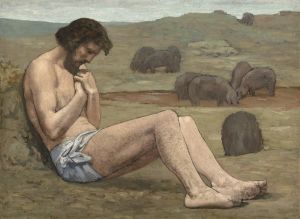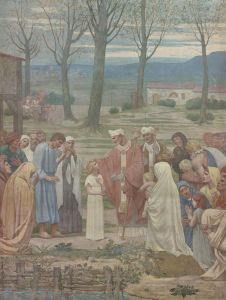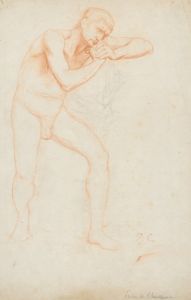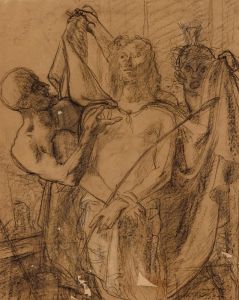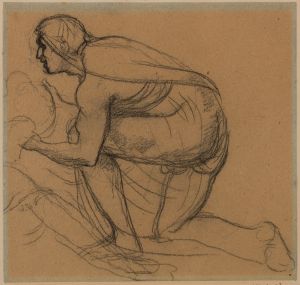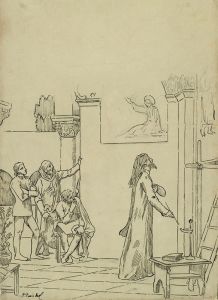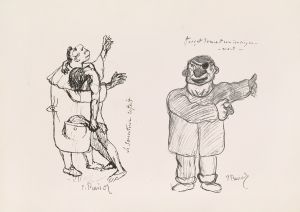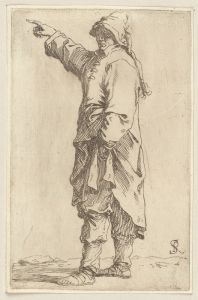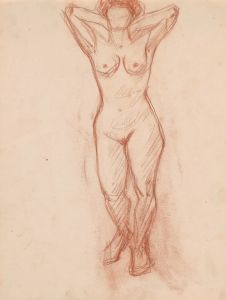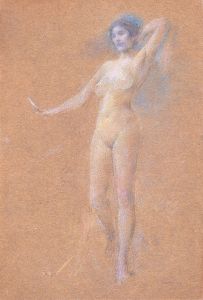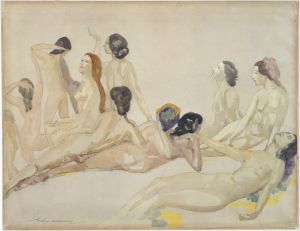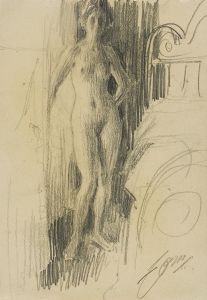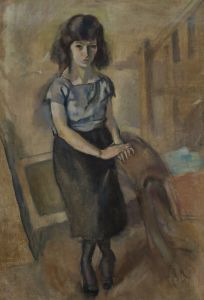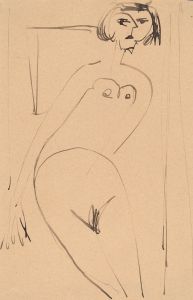
Deux femmes nues debout, de face
A hand-painted replica of Pierre Puvis de Chavannes’s masterpiece Deux femmes nues debout, de face, meticulously crafted by professional artists to capture the true essence of the original. Each piece is created with museum-quality canvas and rare mineral pigments, carefully painted by experienced artists with delicate brushstrokes and rich, layered colors to perfectly recreate the texture of the original artwork. Unlike machine-printed reproductions, this hand-painted version brings the painting to life, infused with the artist’s emotions and skill in every stroke. Whether for personal collection or home decoration, it instantly elevates the artistic atmosphere of any space.
Pierre Puvis de Chavannes was a notable French painter of the 19th century, renowned for his mural paintings and contributions to the Symbolist movement. His work often depicted allegorical and classical themes, characterized by a unique style that combined simplicity with a profound sense of depth and emotion. Among his numerous works, "Deux femmes nues debout, de face" stands out as a significant piece, though specific details about this particular painting are relatively scarce.
"Deux femmes nues debout, de face," which translates to "Two Nude Women Standing, Facing Forward," is a work that reflects Puvis de Chavannes' interest in the human form and classical themes. While detailed records of this specific painting's creation, exhibition history, and current location are limited, it is consistent with Puvis de Chavannes' broader oeuvre, which often explored themes of purity, beauty, and the timeless nature of human experience.
Puvis de Chavannes was known for his ability to convey emotion and narrative through minimalistic compositions, often employing a muted color palette and simplified forms. This approach allowed him to focus on the essence of his subjects, stripping away unnecessary details to reveal deeper truths. In "Deux femmes nues debout, de face," this technique would likely be evident in the way the figures are presented, emphasizing their form and presence rather than intricate details.
The depiction of nude figures was a common motif in Puvis de Chavannes' work, as it was for many artists of his time. The nude form was often used to explore themes of innocence, vulnerability, and the idealized human condition. In the context of the 19th century, such representations were also a nod to classical art traditions, which frequently celebrated the human body in its most natural state.
Puvis de Chavannes' influence on the art world was significant, and his work paved the way for future generations of artists. His style, which bridged the gap between traditional academic painting and the emerging modernist movements, inspired many contemporaries and successors. Artists such as Paul Gauguin and Georges Seurat admired his ability to convey emotion and narrative through simplicity and abstraction.
While "Deux femmes nues debout, de face" may not be as widely recognized as some of Puvis de Chavannes' larger mural works, it nonetheless embodies the qualities that define his artistic legacy. The painting serves as a testament to his skill in capturing the human form and his dedication to exploring timeless themes through art.
In summary, "Deux femmes nues debout, de face" by Pierre Puvis de Chavannes is a work that reflects the artist's mastery of form, composition, and thematic exploration. Although specific details about this painting are limited, it remains an example of Puvis de Chavannes' enduring influence on the art world and his commitment to capturing the essence of the human experience through his unique artistic vision.





